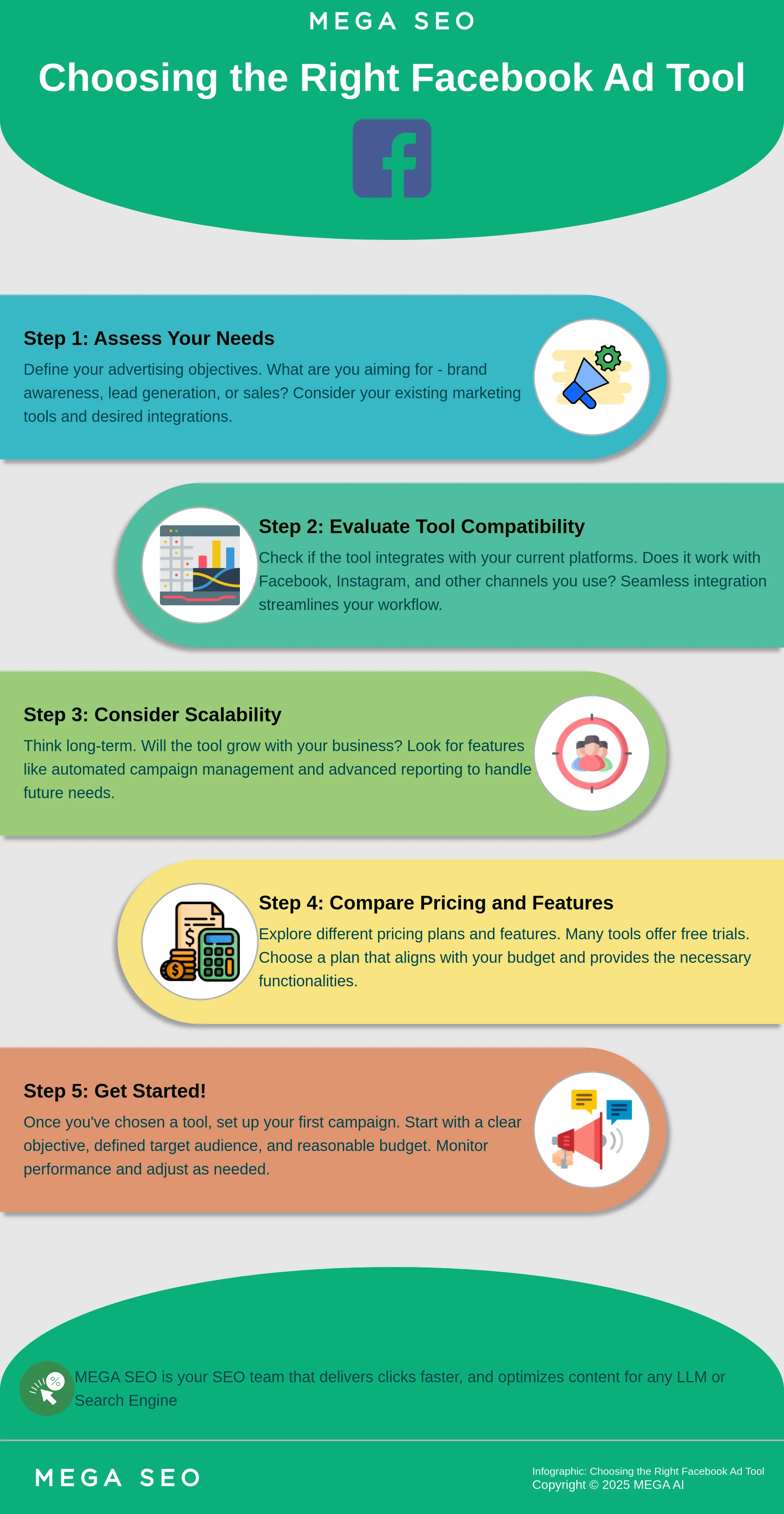The financial markets never sleep, and neither should your trading strategy. Automated trading platforms offer a way to capitalize on opportunities around the clock, executing trades with speed and precision. These platforms leverage algorithms to analyze market data and make trades based on your predefined rules, removing the need for constant monitoring and emotional reactions. But choosing the right platform is crucial. This guide provides a comprehensive overview of automated trading, exploring its benefits, potential risks, and essential features. We’ll also reveal our automated trading platform rankings, helping you navigate the options and find the perfect platform to match your trading style and goals.
Key Takeaways
- Automated trading offers speed and efficiency: Trading platforms execute trades faster than humans, operate 24/7, and remove emotional decision-making, but remember that automated systems don’t guarantee profits.
- Finding the right platform is key: Consider your individual needs, such as preferred trading style, experience level, cost structure, and the range of available instruments. Always test-drive platforms using demo accounts before committing your funds.
- Risk management and staying informed are essential: Protect your capital with a sound risk management strategy, diversify your investments, and continuously learn about advancements in automated trading, including the growing role of AI and machine learning.
What Are Automated Trading Platforms?
Automated trading platforms are software applications that let you execute trades automatically based on predefined rules. These platforms can analyze market data, execute trades, and even manage your trading accounts without needing your direct input. Think of it as having a tireless trading assistant working 24/7. This can be especially helpful for those juggling busy schedules or wanting to remove emotional decision-making from their trading.
Benefits of Automated Trading Systems
Automated trading systems offer several key advantages. Speed and accuracy are paramount – these systems process vast amounts of data and execute trades at optimal prices much faster than any human. This speed advantage can be crucial in fast-moving markets. They also operate 24/7, allowing you to capitalize on opportunities regardless of time zones or personal commitments. Perhaps most importantly, automated systems eliminate emotional trading, a common pitfall for many investors. Algorithmic trading itself accounts for a significant portion of US trading volume, increasing trader productivity. You can also backtest strategies using historical data to see how they would have performed, giving you more confidence before risking real capital.
How Automated Trading Works
Automated trading relies on algorithms to analyze market conditions and execute trades based on your specific criteria. These algorithms can be programmed to follow a variety of trading strategies, from trend following to arbitrage and market making. When choosing a platform, consider factors like data reliability, the accuracy of backtesting tools, and compatibility with your existing brokerage account. Also, pay attention to execution quality. Server-side execution, where trades are processed on the platform’s servers, is generally preferred for its speed and reliability compared to client-side execution.
Top 10 Automated Trading Platforms Ranked
This list of automated trading platforms offers diverse options for various trading styles and experience levels. Remember that the best platform for you depends on your specific needs and preferences. Always do your own thorough research before committing.
1. Pepperstone
Pepperstone consistently ranks as a top international broker, praised for its speed and platform flexibility. With an average execution speed as low as 30ms, it’s a strong contender for high-frequency automated strategies. The availability of MetaTrader 4 (MT4), MetaTrader 5 (MT5), and cTrader, combined with VPS hosting and API access, caters to traders who need robust tools and customization.
2. Errante
For those interested in copy trading, Errante offers a unique advantage. Its integrated CopyTrade tool within MT4 provides in-depth performance statistics, allowing you to select trading strategies based on verifiable data. This transparency is invaluable for automated trading.
3. Moneta Markets
Moneta Markets focuses on providing a low-cost, high-speed trading environment. With spreads from 0.0 pips and free VPS hosting, it’s designed for efficiency. The platform’s ECN account type further enhances execution speed and reduces trading costs, making it attractive for automated systems sensitive to slippage.
4. Vantage
Vantage stands out with its broad selection of 57 crypto assets and competitive spreads. This makes it a solid choice for those looking to automate crypto trading strategies. Free VPS hosting for qualifying accounts, along with support for multiple trading platforms, adds to its appeal. You can learn more about their offerings on their pricing page.
5. ActivTrades
Known for its reliability and low spreads, ActivTrades offers a stable environment for automated trading. The platform’s commitment to no requotes, combined with support for both MT4 and MT5, ensures consistent execution. Explore their MT4 and MT5 pages for more details.
6. FxPro
Speed is a key differentiator for FxPro, boasting an execution speed of less than 40ms. This, combined with deep liquidity and support for MT4, MT5, and cTrader, makes it well-suited for high-frequency automated trading that demands rapid order filling. Their trading platforms page offers a comprehensive overview.
7. IC Markets
IC Markets provides a suite of advanced trading tools, including MT4 enhancements, Trading Central, and Autochartist. These tools empower traders to develop, backtest, and refine their automated strategies.
8. AvaTrade
AvaTrade offers a range of platforms catering to different automated trading approaches. From traditional MT4 and MT5 to social trading platforms like AvaSocial and DupliTrade, it provides options for those exploring various automated and semi-automated strategies. Learn more on their trading platforms page.
9. FP Markets
With access to over 10,000 instruments across MT4, MT5, and cTrader, FP Markets offers extensive diversification opportunities. This broad instrument selection is particularly beneficial for automated traders seeking to implement complex portfolio strategies. Their product range showcases the variety available.
10. tastytrade (tastyworks)
tastytrade (now tastyworks) caters specifically to US-based traders, offering a streamlined experience with MT4 integration and access to over 80 forex pairs. The platform’s cashback rebates provide an added incentive for active traders. Visit their forex trading page for more information.
Essential Features of Top Platforms
Looking for the right automated trading platform? Here’s what to consider. Prioritize features that align with your trading style and experience level.
Algorithmic Trading Capabilities
A robust platform should empower you to implement your unique automated trading strategies. Whether you’re using pre-built algorithms or developing your own, look for platforms like MetaTrader 4 and MetaTrader 5 that offer flexible algorithmic trading features. The availability of VPS hosting and APIs further expands the possibilities for customization and uninterrupted trading.
Backtesting Tools
Before deploying any automated strategy, rigorous backtesting is essential. A platform with reliable backtesting capabilities, ideally using tick-by-tick data, helps you evaluate the potential performance of your strategies under various market conditions. ProRealTime, for example, offers both no-code options for beginners and advanced coding features for more experienced traders.
User-Friendly Interfaces
An intuitive interface can significantly impact your trading experience. Platforms like TrendSpider are known for their user-friendly design, visual analysis tools, and AI-driven features. A no-code strategy testing environment is particularly helpful for traders who prefer a visual approach or are new to automated trading.
Software Integration
Seamless integration with other trading tools and services is crucial for maximizing efficiency. Consider platforms like MetaTrader, which offers compatibility with numerous brokers and allows for third-party API integration. This flexibility lets you connect your preferred charting software, data feeds, and other tools to create a personalized trading ecosystem.
Risk Management Features
Protecting your capital is paramount in automated trading. Look for platforms that offer robust risk management tools, including features like stop-loss orders, take-profit orders, and position sizing controls. Choosing a well-regulated broker adds another layer of security, ensuring your funds are held in segregated accounts and protected by regulatory oversight. Remember, automated trading does not eliminate risk entirely, so a sound risk management strategy is always necessary.
Comparing Costs: Fees and Commissions
When evaluating automated trading platforms, understanding the fee structure is crucial. Those seemingly small costs can significantly impact your overall returns. Let’s break down the key areas to watch:
Understanding Spread Costs
The spread is the difference between the buy (ask) and sell (bid) price of a currency pair. It’s essentially the broker’s commission on each trade. A tighter spread means lower transaction costs. While many brokers advertise low spreads, remember these can vary depending on market conditions and the specific currency pair you’re trading. For active, high-volume traders, even a small difference in the spread can add up. Brokers often highlight features like VPS hosting and API access, but don’t let those distract you from scrutinizing the spread costs.
Commission Structures
Beyond spreads, some platforms also charge commissions per trade. These are usually fixed fees, but some brokers offer tiered pricing based on your trading volume. For example, a platform might charge a flat fee per contract, while others offer tiered systems with commission-free options on certain account tiers. Make sure you understand the specific commission structure before committing to a platform. Review online trading platforms to compare different commission models.
Hidden Fees
Finally, be on the lookout for hidden fees. These can include inactivity fees, withdrawal fees, or data fees. Some brokers might also charge extra for premium features or research tools. Transparency is key. A reputable, well-regulated broker will clearly outline all fees associated with their platform. Don’t hesitate to ask questions and compare fees across different brokers to ensure you’re getting the best deal. Understanding the fine print can save you money in the long run.
Strengths and Weaknesses of Leading Platforms
When choosing an automated trading platform, understanding the nuances of each provider is crucial. No single platform perfectly suits every trader, so let’s break down the key strengths and weaknesses to consider.
Execution Speed and Reliability
In the fast-paced world of automated trading, milliseconds matter. Fast execution can significantly impact your trading outcomes, especially with high-frequency strategies. Some brokers offer impressive speeds as low as 30 milliseconds, giving you a competitive edge. However, speed isn’t everything. Reliability is equally important. Look for platforms with a proven track record of uptime and minimal slippage. A thorough platform analysis considers factors like regulation, fees, platform quality, execution speed, and available tools, ensuring a robust and dependable system.
Tradable Instruments
The range of tradable instruments offered by a platform directly influences your diversification options. Some platforms focus on specific asset classes, while others, like FP Markets, provide access to over 10,000 instruments via MT4, MT5, and cTrader. This vast selection allows you to explore various markets and tailor your automated strategies accordingly. Consider whether a platform’s instrument range aligns with your trading goals and preferred asset classes. Leading platforms like Charles Schwab, Fidelity Investments, Interactive Brokers, E-Trade, Merrill Edge, Ally Invest, Tastytrade, and TradeStation offer a variety of options for traders.
Customer Support
Even with automated systems, access to reliable customer support is essential. Technical issues, platform questions, or account inquiries can arise unexpectedly. Traders should prioritize platforms known for responsive and knowledgeable customer service. Look for 24/7 support, multiple communication channels (email, phone, chat), and comprehensive FAQs or help centers.
Educational Resources and Research Tools
For both new and experienced automated traders, access to educational resources and robust research tools can be invaluable. The ideal platform isn’t just about flashy features; it’s the right combination of features, pricing, and support that best suits your trading style and volume. Broker reviews, including pros and cons, key features, and ratings, can help you assess the educational value and research capabilities of different platforms. Look for platforms offering in-depth market analysis, charting tools, economic calendars, and educational materials to empower your trading decisions.
Mitigating Risks in Automated Trading
Automated trading can feel like a shortcut to market success, but it’s essential to understand the potential downsides. While a platform can execute trades for you 24/7, it doesn’t eliminate market risk. Let’s explore some common pitfalls and how to avoid them.
Common Pitfalls
One of the biggest mistakes new traders make is assuming automated systems guarantee profits. A 2025 FXEmpire report on auto-trading brokers points out that a substantial number of retail investors lose money trading CFDs. Automated trading isn’t a magic bullet; it requires careful planning and ongoing monitoring. Another common trap is relying on “set-it-and-forget-it” systems without understanding the underlying logic. Market conditions change, and a strategy that worked yesterday might not work today. Blindly trusting a system without understanding its limitations can lead to significant losses.
Risk Management Strategies
Effective risk management is crucial for any trading strategy, especially automated ones. The same FXEmpire article emphasizes the importance of choosing a well-regulated broker to safeguard your funds. It also advises comparing fees and account types, and carefully considering leverage levels. Don’t overextend yourself financially. Start with smaller amounts you can afford to lose and gradually increase your investment as you gain experience and confidence. Setting realistic expectations is also key. No system can win every trade, and focusing on consistent, manageable gains is more sustainable than chasing unrealistic returns.
Diversification
Diversification is a cornerstone of sound investing, and it applies to automated trading as well. Don’t put all your eggs in one basket. Explore different asset classes and trading strategies to spread your risk. A Golden Owl piece on AI trading bots highlights how algorithmic trading enhances trader productivity. While automation can improve efficiency, it shouldn’t replace due diligence. Thorough research and a solid understanding of market dynamics are still essential. Remember, past performance is not indicative of future results. Continuously evaluate your automated system’s performance and adjust your strategy as needed.
Choosing Your Ideal Automated Trading Platform
Finding the right automated trading platform takes careful consideration. It’s more than just picking the flashiest software; it’s about finding the best fit for your trading style and goals. Here’s how to approach the selection process:

Match Features to Your Trading Goals
Before you even start browsing platforms, take some time to define your trading goals. What are you hoping to achieve? Are you focused on short-term gains or long-term growth? What markets are you interested in? Once you have a clear picture of your objectives, you can start evaluating platforms based on the features they offer. Think about things like available trading instruments, regulation, fees, and the quality of their execution. A platform that excels in areas relevant to your goals will significantly improve your chances of success.
Experience Level Considerations
Your experience level is another key factor in choosing the right platform. If you’re just starting out, a platform with a user-friendly interface and no-code or low-code options might be a good choice. These platforms allow you to automate trades without needing extensive programming knowledge. As you gain experience, you might want to explore platforms that offer more advanced features, like customizable charting and backtesting tools, or even full coding capabilities for building your own custom strategies. Consider platforms like MetaTrader which cater to various experience levels.
Use Demo Accounts
One of the smartest things you can do when evaluating automated trading platforms is to take advantage of demo accounts. Most reputable platforms offer them, and they’re a fantastic way to test the waters without risking real money. A demo account lets you explore the platform’s features, get a feel for its interface, and even try out different trading strategies in a simulated environment. This hands-on experience is invaluable in helping you determine whether a platform is the right fit for you before you commit any capital. Check out this resource on how to use a demo account effectively.
Platform Regulation and Security
Security is paramount when you’re exploring automated trading platforms. It’s essential to understand how regulatory oversight and platform-specific security measures protect your investments.
Regulated Brokers
A regulated broker provides a crucial layer of protection. Regulatory bodies impose strict rules and guidelines on these brokers, safeguarding traders from fraudulent activities and ensuring fair practices. When comparing brokers, look at their regulatory status, the fees they charge (including spreads, commissions, and overnight fees), and the types of accounts available. Understanding the leverage offered is also important, as it can significantly impact your trading experience. For example, some brokers offer commission-free accounts, while others operate on a commission-based structure. Researching these factors will help you find the right fit.
Security Measures and Fund Protection
Beyond regulation, look for robust security measures directly on the trading platform. Reputable platforms employ advanced security protocols to protect user data and funds. Many brokers who support automated trading through platforms like MT4 and MT5 offer additional features like VPS hosting and APIs to enhance trading efficiency and security. Features like copy trading, where you can replicate the strategies of successful traders, can also offer a degree of security through shared expertise. Choosing a well-regulated broker and a platform with strong security features will give you peace of mind while trading. Consider exploring resources like FXEmpire’s guide to the best auto trading platforms for more information on secure and reliable options.
Future of Automated Trading
The world of automated trading is constantly evolving, driven by advancements in technology and increasing accessibility for retail traders. Let’s explore what the future holds.
AI and Machine Learning Advancements
Artificial intelligence and machine learning are transforming automated trading. We’re seeing platforms incorporate AI-driven features like sentiment analysis, news-based trading signals, and adaptive algorithms that learn and adjust to changing market conditions. As AI and machine learning mature, expect more sophisticated trading bots capable of identifying complex patterns and executing trades with greater precision. Golden Owl’s review of free AI stock trading bots highlights the benefits and drawbacks of these tools, emphasizing the importance of understanding the potential challenges while appreciating the speed and 24/7 market monitoring they offer. The increasing use of AI in trading also underscores the need for robust risk management.
Accessibility for Retail Traders
Automated trading is becoming increasingly accessible to retail traders through user-friendly platforms and readily available tools. Platforms like TradingView, while requiring some coding knowledge with their Pine Script language, offer a large community and many broker options for those interested in building automated strategies. FXEmpire’s review of the best auto trading platforms highlights the rising popularity of MT4 and MT5, along with the increasing availability of VPS hosting and APIs, which further empowers retail traders. This wider access allows individual investors to leverage sophisticated tools previously only available to institutional players.
Related Articles
- How to Make Money with Automated Trading: A Practical Guide
- Benefits of Automated Trading Strategies
- Algorithmic Trading Platforms: Your Complete Guide
- Understanding Algo Trading Risks: Essential Guide
- How to Create an Automated Trading Strategy (Step-by-Step)
Frequently Asked Questions
Is automated trading suitable for beginners?
Automated trading can be beneficial for traders of all experience levels. Beginners can leverage user-friendly platforms with pre-built strategies or no-code options, while experienced traders can customize and refine their automated systems. However, regardless of experience, understanding the inherent risks and implementing appropriate risk management strategies is crucial. Starting with a demo account is highly recommended for beginners to familiarize themselves with the platform and test strategies before risking real capital.
What are the key factors to consider when choosing an automated trading platform?
Your individual trading goals, experience level, and preferred trading style should guide your platform selection. Consider factors like the range of tradable instruments, available order types, backtesting capabilities, and the platform’s fee structure. Execution speed and reliability are also paramount, especially for high-frequency strategies. Don’t overlook the importance of robust security measures and regulatory oversight when making your decision.
How can I mitigate risks associated with automated trading?
Thorough backtesting of your strategies using historical data is essential to assess their potential performance under various market conditions. Implementing robust risk management tools, such as stop-loss orders and position sizing controls, is crucial to protect your capital. Diversifying your investments across different asset classes and strategies can further mitigate risk. Remember that automated trading does not guarantee profits, and continuous monitoring and adjustment of your strategies are necessary.
What is the role of regulation in automated trading platforms?
Choosing a regulated broker offers significant protection for your investments. Regulatory bodies impose strict rules and guidelines on brokers to ensure fair practices and safeguard traders from fraudulent activities. Regulation provides a level of assurance that your funds are held securely and that the platform operates within established legal frameworks. Always verify the regulatory status of a broker before entrusting them with your capital.
What are the future trends in automated trading?
The future of automated trading is likely to be shaped by advancements in artificial intelligence and machine learning. Expect to see more sophisticated trading bots capable of analyzing complex market data and executing trades with increased precision. The accessibility of automated trading for retail traders is also expected to increase, with more user-friendly platforms and tools becoming available. These advancements offer exciting possibilities but also underscore the importance of responsible trading practices and robust risk management.





